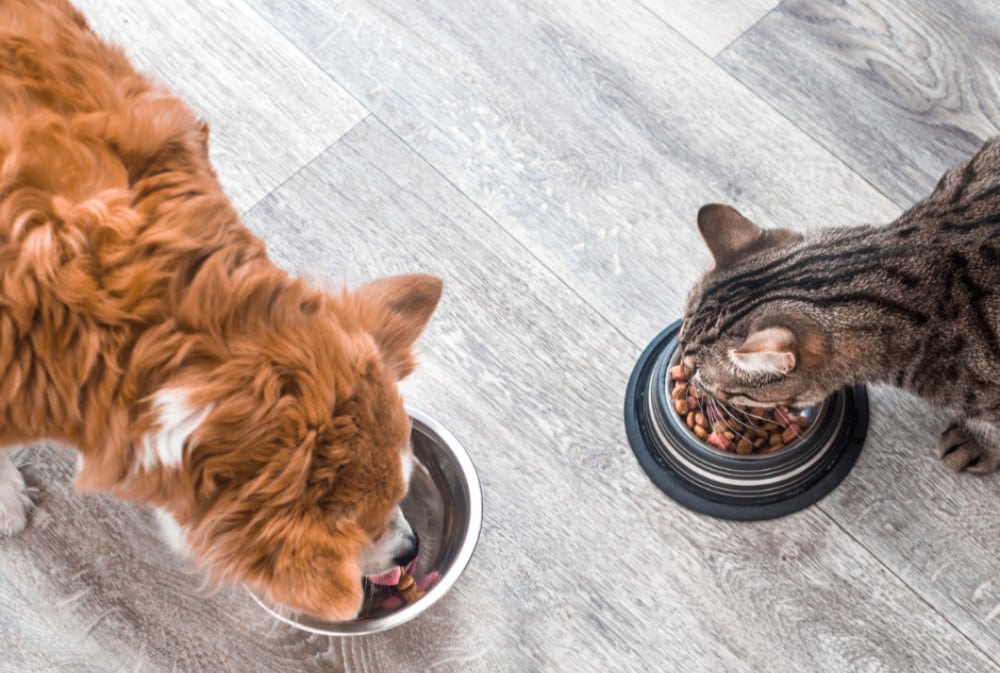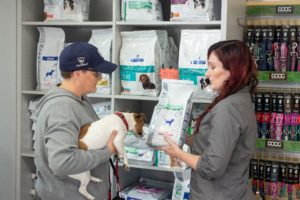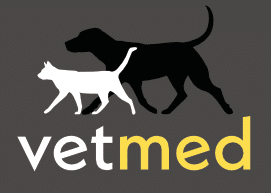Food for thought when it comes to feeding dogs and cats

The topic of what to feed your dog or cat is a broad one. Everyone’s experience is different, and the needs of different animal breeds vary. This means there is no one-size-fits-all answer; however, you can follow some fundamental guidelines to help you decide the composition of your pet’s diet.
YOUR PET IS AN INDIVIDUAL
It’s important to remember that all dogs and cats are individuals, and a diet that is suitable for your friend’s pet may be entirely inappropriate for yours. When it comes to a daily diet for your pet, it’s essential to consult with your vet first.
WHAT SHOULD MY PET BE EATING?
Dogs and cats are carnivores which means they primarily eat meat. But it is too simplified to assume that is all they need. Instead, it would be more accurate to say they require a meat-based diet that balances protein, fat, carbohydrates, vitamins, and minerals.
HOMEMADE OR COMMERCIAL?
Whether you prepare your pet’s food at home yourself or purchase pre-prepared pet food, you must meet the fundamental need of providing a balanced diet consisting of the building blocks listed above. This basic need should inform any decision you make. While this can be more of a challenge if you are doing it yourself, it is by no means unachievable.
It is important not to confuse ‘raw’ diets with ‘homemade’ meat diets. The homemade variety is often not well balanced and can lead to illness. You can give your pet a raw diet that includes only fresh ingredients, so long as it is balanced and follows a recommended recipe for your pets age and requirements. Premium nutrition diets that come in both wet foods (cans), dry foods (kibbles) or semi-moist foods (rolls, or chewy pellets) are completely balanced for your pets life stage, please ask one of our team for the best recommendations for your pet.
SELECTING COMMERCIAL FOOD
 Begin by considering your pets nutritional needs, breed and stage of life. Not all commercial foods will be suitable, and some pets may need a tailored veterinary diet. For pets without specific health conditions, most commercial pet food products on the market are designed to provide total nutrition. These products often have the term ‘complete’ or ‘balanced’ on the pet food packet.
Begin by considering your pets nutritional needs, breed and stage of life. Not all commercial foods will be suitable, and some pets may need a tailored veterinary diet. For pets without specific health conditions, most commercial pet food products on the market are designed to provide total nutrition. These products often have the term ‘complete’ or ‘balanced’ on the pet food packet.
This term refers to the right quantities of protein, fat, fibre and carbohydrates, and specific vitamins, minerals, and fatty acids.
You will find that leading pet food manufacturers offer a range of these products which provide nutritional support for common cat and dog types, issues and life stages. Do your research, review the manufacturer’s website for nutritional information and consult with your vet for the most appropriate commercial options for your pet.
HOW MUCH FOOD IS TOO MUCH FOOD?
Many of us overfeed our pets, whether it is a kibble or meat diet. Obesity in pets is a big problem, causing many chronic diseases. The primary consideration for determining how much food you should feed your pet is knowing how many calories your pet requires. Calories are how much energy a food contains. So to maintain a certain weight, the calories your pet ingests needs to equal energy expenditure.
Pet food labels provide recommended amounts based on animal weight and are a good reference. Once you’ve worked out how many calories your dog or cat requires, you need to calculate how many calories the food contains, giving you the total amount.
Of course, your pet’s activity level will have a significant bearing on the amount of food they require. For example, a working dog will need more calories than a more sedentary dog. A simple rule is if your pet is gaining too much weight, reduce their intake and increase their intake if they are losing weight until a balance is found.
HOW OFTEN SHOULD I BE FEEDING MY PET?
As for how often, many veterinarians recommend portion-controlled meal feeding twice daily for adult dogs and cats, once in the morning and once in the early evening, and more frequently for puppies and kittens, depending on their age. This approach allows you to monitor how much and how well your pet is eating.
THREE RULES TO GET YOU STARTED
- Look for a complete diet or complete food as your starting point.
- Always provide clean, fresh water – lots of it, and check it twice daily.
- Feed only enough to keep your pet in good condition, don’t overfeed.
The information provided here is in no way exhaustive. So if you are having difficulties providing a balanced diet for your pet or have any questions about feeding, please get in touch with the friendly and caring professionals at Vetmed eastern suburbs, vet Frenchs Forest, vet Allambie, vet North Shore.
